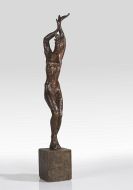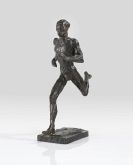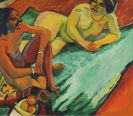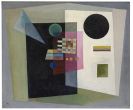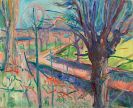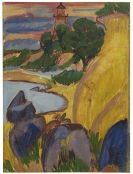
Renée Sintenis
Glatz/Schlesien
1888 -
Berlin
1965
The German sculptor and graphic artist Renée Sintenis was born as Renate Alice Sintenis in Glatz, Silesia, in 1888. She began to study at the Berlin School for the "Decorative and Applied Arts" in 1908 but had to overcome her parents' objections in order to continue.
By 1915 she was showing work with the Berlin Secession. She soon made influential friends and her work became popular. In 1917 Renée Sintenis married the painter and writer Emil Rudolf Weiß. Sintenis' success grew during the 1920s, culminating in the 1926 bronze "Der Läufer von Nurmi" ["The Runner from Nurmi"], for which she was awarded the 1932 Olympia Prize.
Renée Sintenis was one of the few women artists of her day to be appointed to the Prussian Academy of Art (1931), where she taught until the National Socialists forced her to leave in 1934.
After the second world war Renée Sintenis was again permitted to teach art in 1947 at the "Hochschule der Künste". Awarded the art prize of the city of Berlin a year later, she became a full professor at the Berlin Art Academy in 1955. During the 1950s Renée Sintenis was awarded the Pour le mérite order ("Knight of the Class of Peace") and the Grand Federal Service Cross.
One of the most successful women sculptors in Berlin since the 1920s, Renée Sintenis was a distinguished sculptor of animals: the emblematic "Berlin Bear" was her design. She is also known for her portrait sculpture and figures of athletes.
Renée Sintenis' last years were marred by serious illness and she died at the age of seventy-seven in Berlin in 1965.
Would you like to sell a work by Renée Sintenis?
Infos for seller
